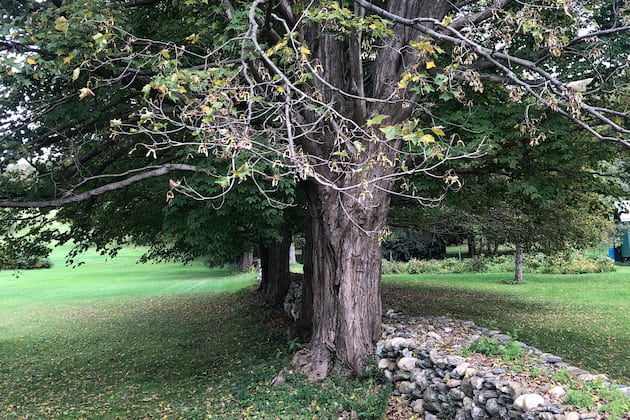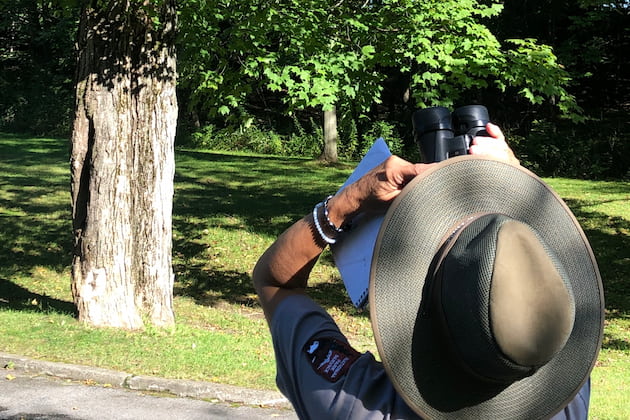Sugarbush Management
Trees looking terrible and probably infected with anthracnose
Fungal disease wont kill tree but will cause browning and leaf drop
By PETER GREGG | SEPTEMBER 22, 2021
STILLWATER, N.Y.—It’s not your imagination, the trees look terrible.
Trees across the Maple Belt have a curled, brownish look with dropping leaves and premature color changes, with some turning color in the middle of August.
“I don't believe I have observed sugar maples transition in this manner and in the quantity we are currently observing,” said Linda White, a ranger with the National Park Service in Stillwater, N.Y. who has been observing trees for the USA National Phenology Network for 25 years.
White said on Sept. 16 that the trees were the worst she’d ever seen them.
Sugarmakers have been noticing a decline in trees since the spring.
Experts are blaming most of the problem on Maple anthracnose, a fungal disease that won't kill the tree but sure makes them unsightly.
Although this foliar disease is more prevalent after wet springs, it can also appear following short periods of heavy rain, which has been persistent all summer throughout the Midwest and Northeast.
In large and dense canopies, the pathogen can spread to other parts of the crown, causing leaf necrosis, deformation and premature leaf drop, according to experts.
Although not aesthetically pleasing, this pathogen does not contribute to severe dieback or defoliation.
“Seems to be more prevalent this year,” said Dr. Timothy Perkins, director of the UVM Proctor Maple Research Center in Underhill, Vt.. “Just drove from Ohio to VT a few days ago and saw a good bit of it along the way.”
Perkins also reassured that the fungal growth is not real serious, but definitely can diminish color in affected areas.
Other experts agreed that anthracnose is the culprit.
“I'm pretty certain the wet weather has allowed anthracnose fungus to proliferate broadly in northeastern forests this summer,” said Aaron Wightman, co-director of the Cornell Maple Program.
He added that the fungus is always present in the environment and that the persistent rain and high humidity allowed it to invade tree leaves.
The trees respond by cutting off nutrients to the infected area which makes it turn brown.
If the infection is widespread enough, the leaf will drop from the tree, Wightman said.
“The immediate implications for tree health are likely minor since this happens after the main period of active growth has ended,” Wightman said. “But it looks terrible and probably puts a big dent in foliage tourism.”
Meanwhile, authorities are on high alert for another tree invader, the Spotted Lanternfly, an invasive pest from China which likes to chew up trees including maple.
Ailis Clyne of the Cornell Maple Program found an adult spotted lanternfly in Ithaca, N.Y. last week.
"They are quickly establishing themselves throughout New York," Wightman said. "I can only speculate about the impact to the maple industry, but this could get interesting very quickly."
Sugarmakers in Indiana were put on high alert in August when the laternfly was discovered in that state, in Switzerland County, the farthest west the insect has been found.
Adult spotted lanternfly has two sets of wings, and the underwing has a very distinct red color with spots on the outer wings.
The egg masses of this invasive insect look like mud and they can be spread by vehicle transport, athorities said.
They can also be spread through trade materials sold in infested areas that are shipped out of state including nursery stock, outdoor furniture, lumber, etc.

































